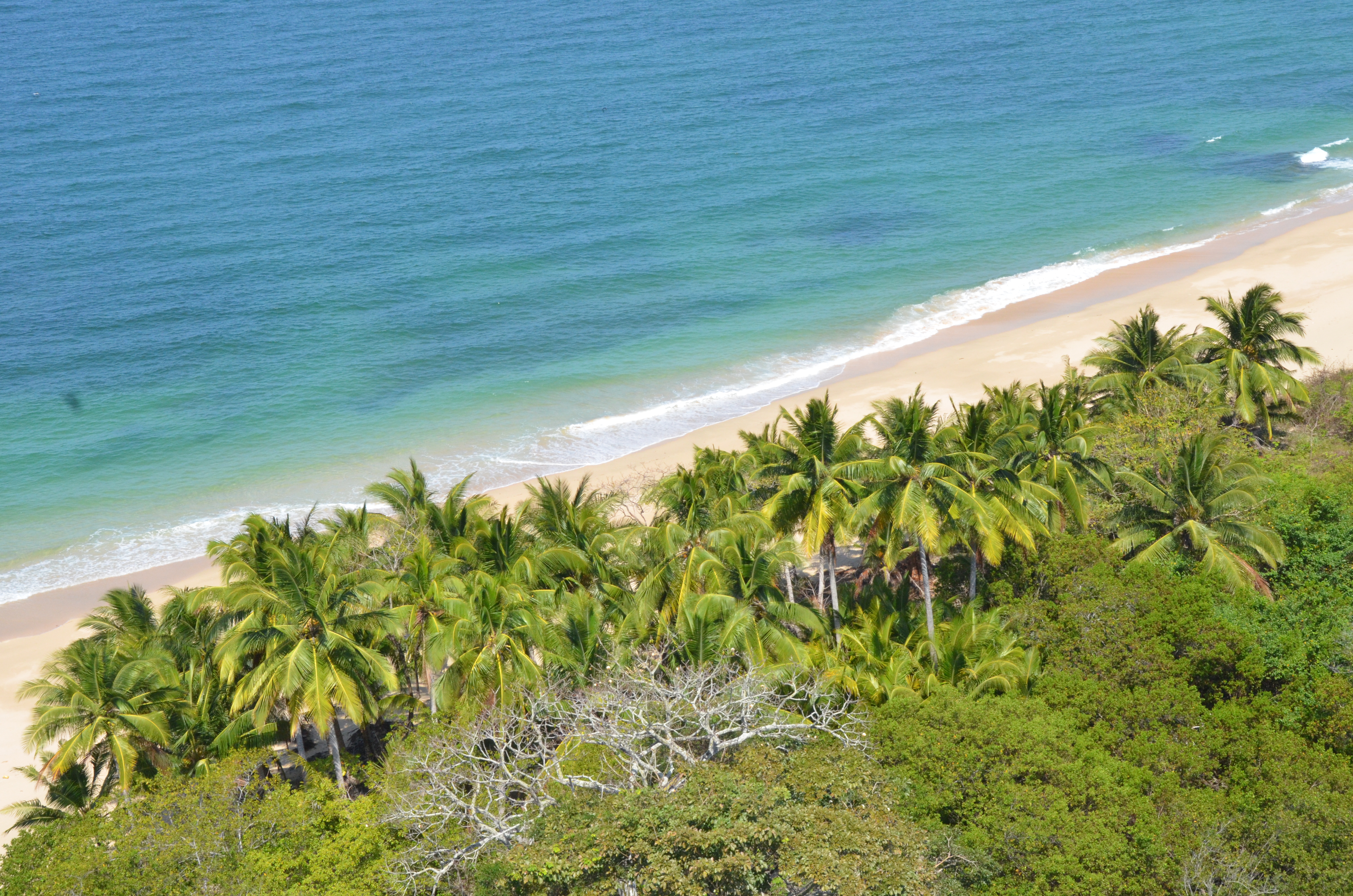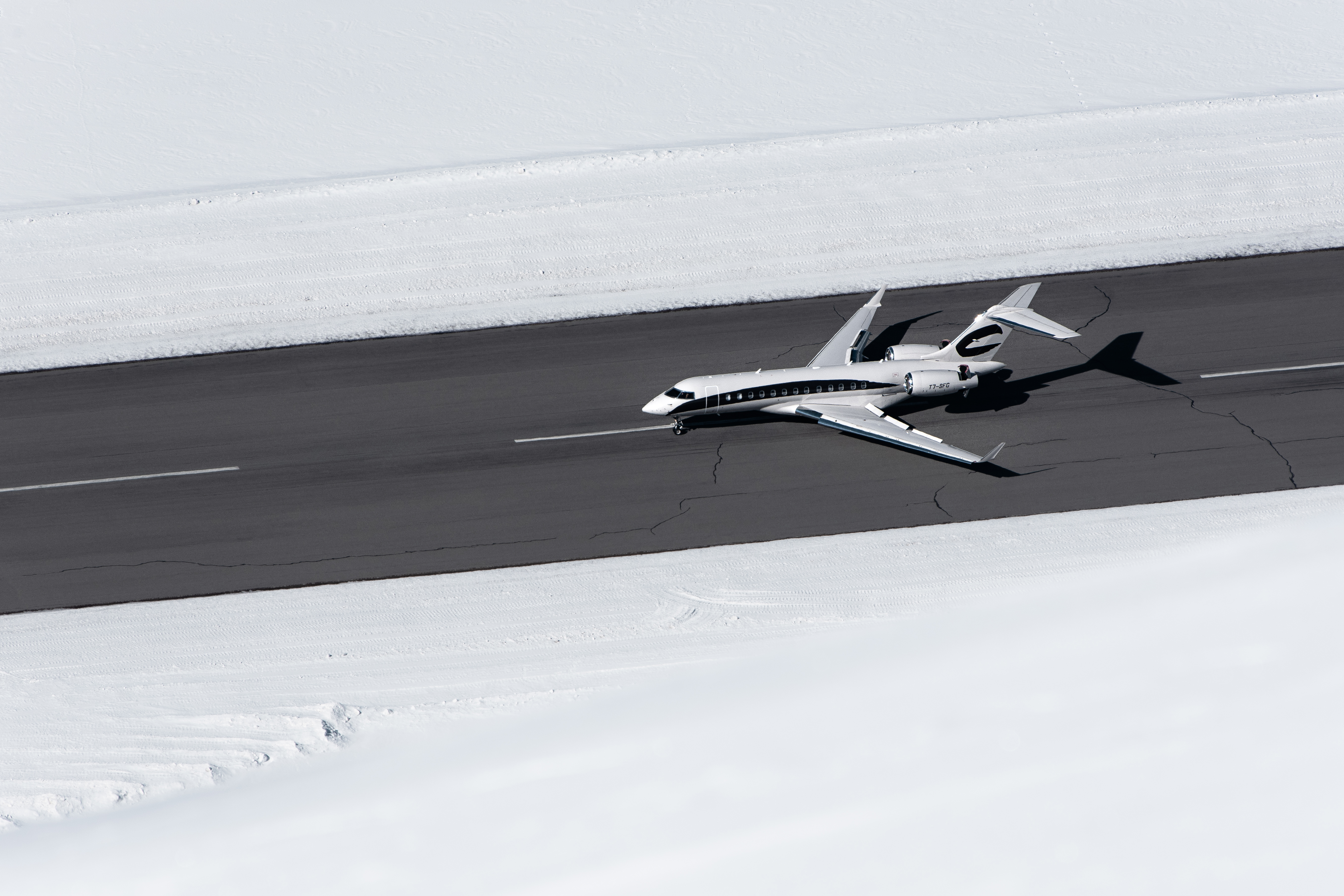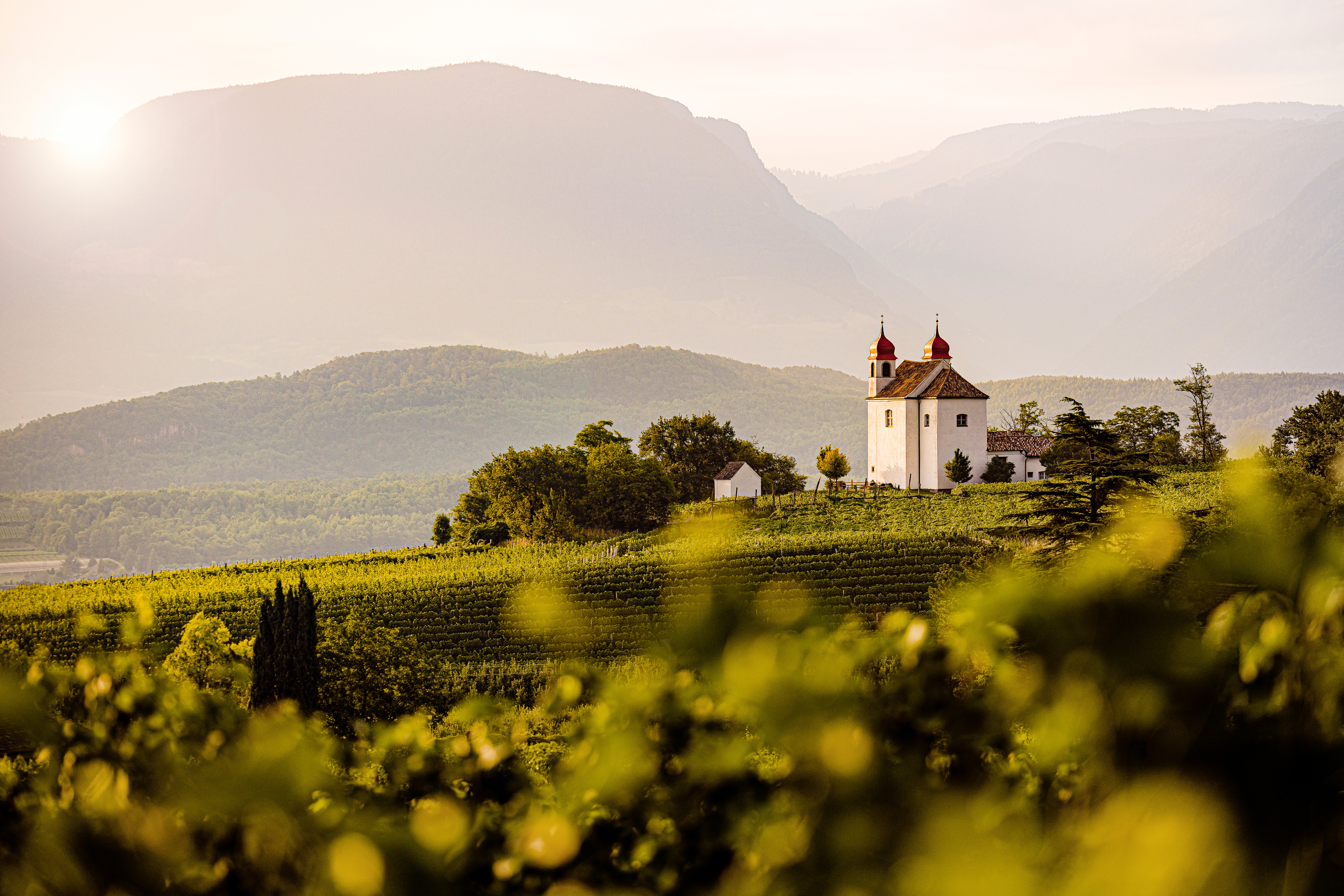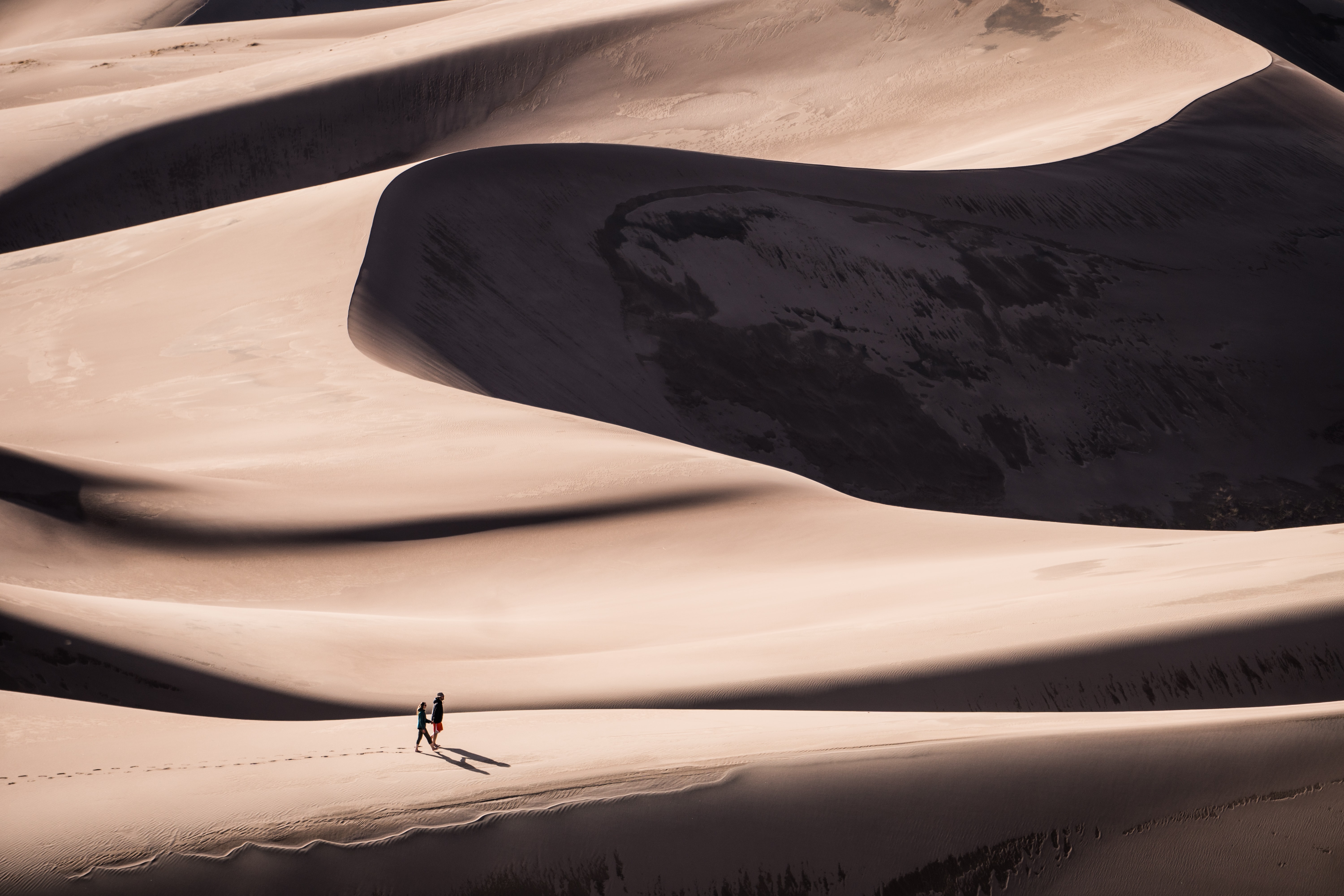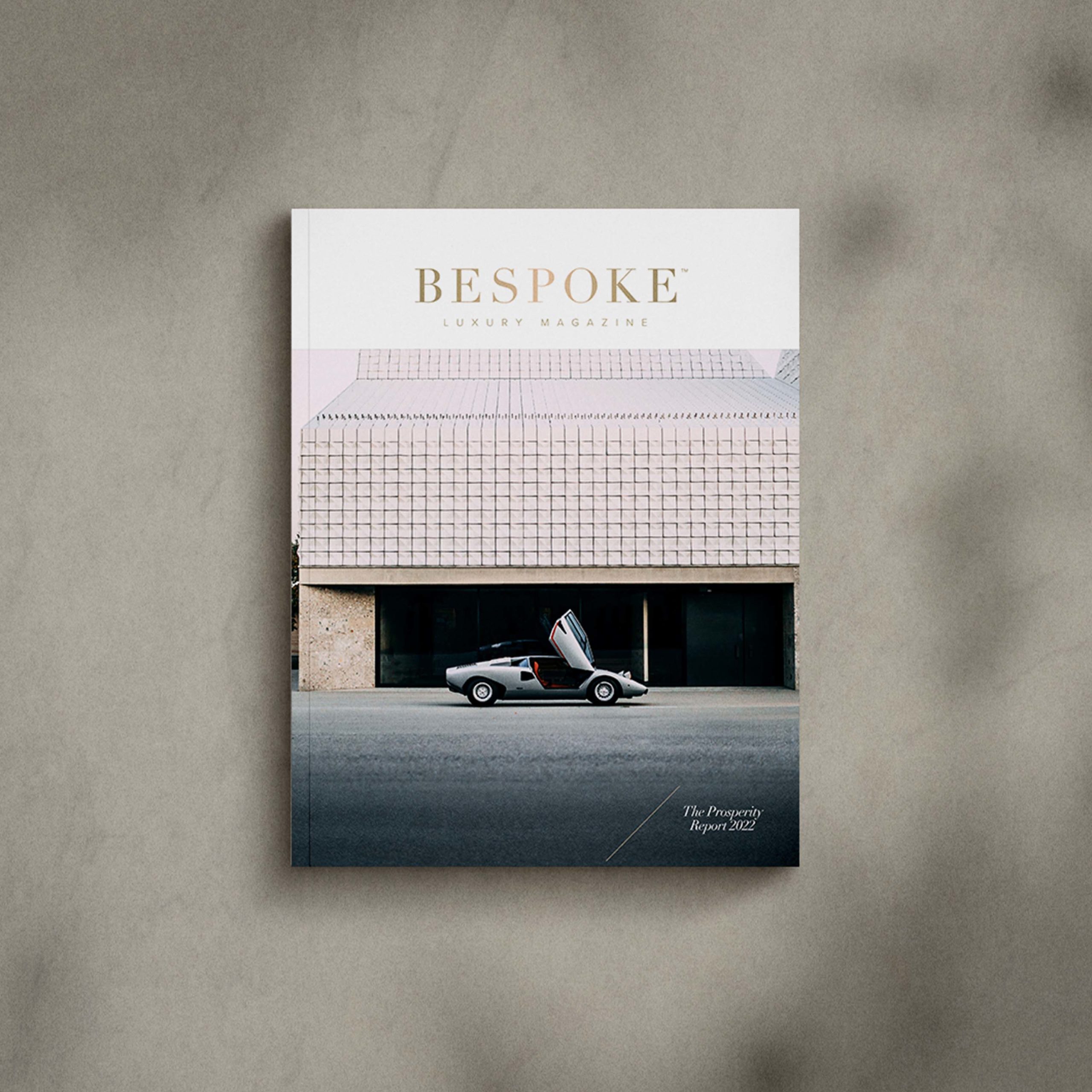December 7th, 2021
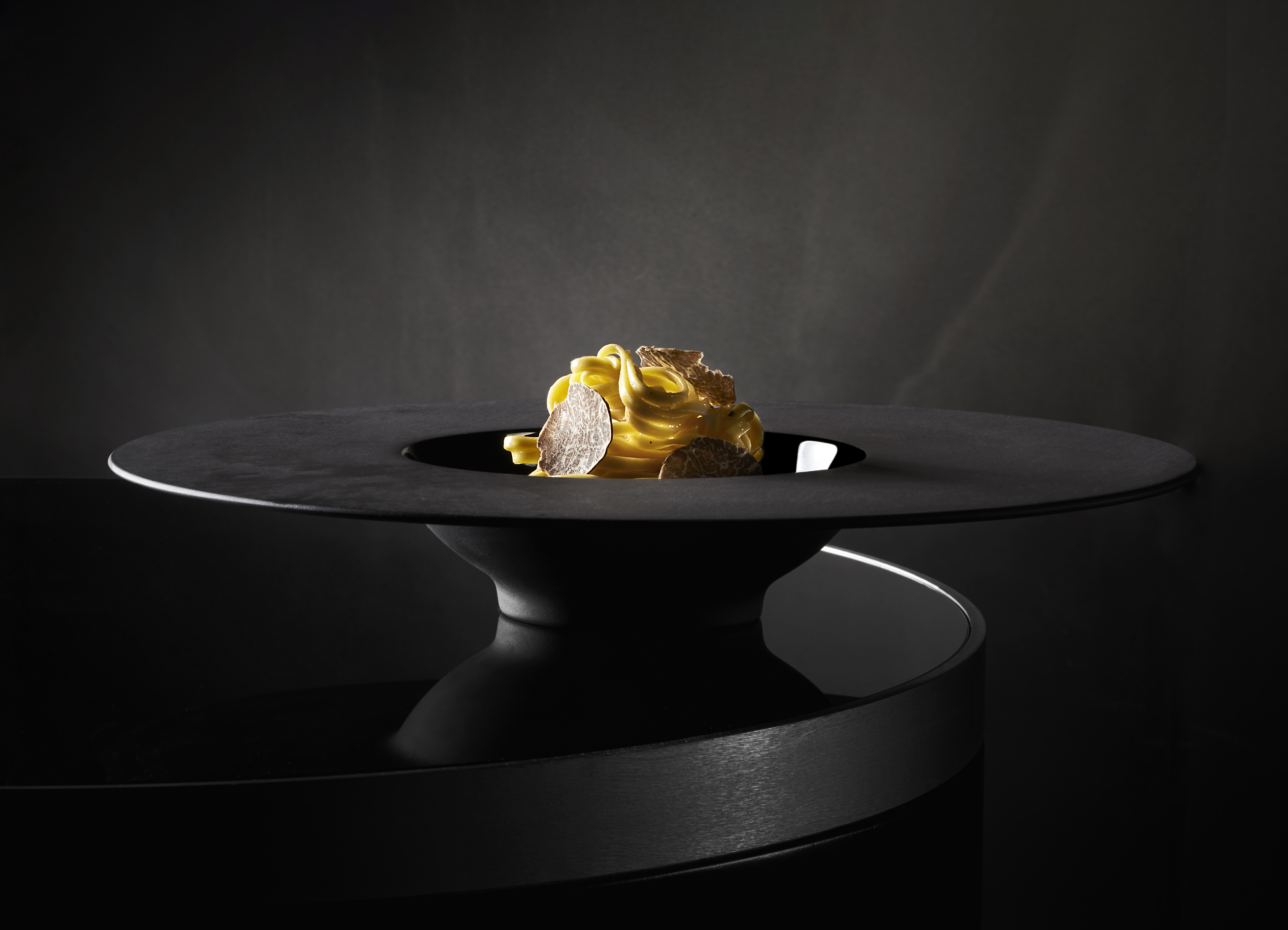
Taglioni with Truffles. Courtesy Savini Tartufi and Marco Varoli
An Alba white truffle is the second most expensive thing you can eat, after gold leaf. Its Latin name, Tuber Magnatum Pico, means “truffle of the powerful”, coined by Vittorio Pico in 1788. In Italian, it is also sometimes called the diamond of the kitchen (“il diamante della cucina”) or white gold (“oro bianco”).
Truffles grow only in natural conditions and cannot be cultivated like agricultural products. The Alba white truffle, which thrives in Piedmont, Italy, is prized for its aroma and can only be “hunted” between September 21 to January 31 every year, protected by the Italian law.
Its growth begins after late summer rain and starts forming at the roots of host trees, which are usually oaks or poplars not far from a water source. In an extremely delicate symbiosis, they exchange water and minerals, keeping an optimal level of moisture and nutrients in the soil that the surrounding fauna and flora depend on. The formation of this gourmet item attests to Nature’s ability to reset itself.
White truffles thrive under damp and shady soil at altitudes below 2,300 feet, while black truffles grow in sunny, hilly areas.
“Truffles depend on and contribute to biodiversity, which ultimately benefits flora and fauna in the entire region,” says Carlo, a local truffle hunter.
The only way to find mature truffles is through smell. Formed a few inches underground, the white truffle’s aroma attracts animals, which dig out the delicacy, releasing and spreading the spores to different parts of the forest.
Since antiquity, truffle hunters and their expertly trained dogs have practiced the same search and dig process (“cerca e cavatura”), most often through forests in the middle of the night.
The tradition is so revered that Antonio Degiacomi, President of the National Truffle Study Center, applied to UNESCO “with the objective of having truffle hunting listed as an Intangible Cultural Heritage.”
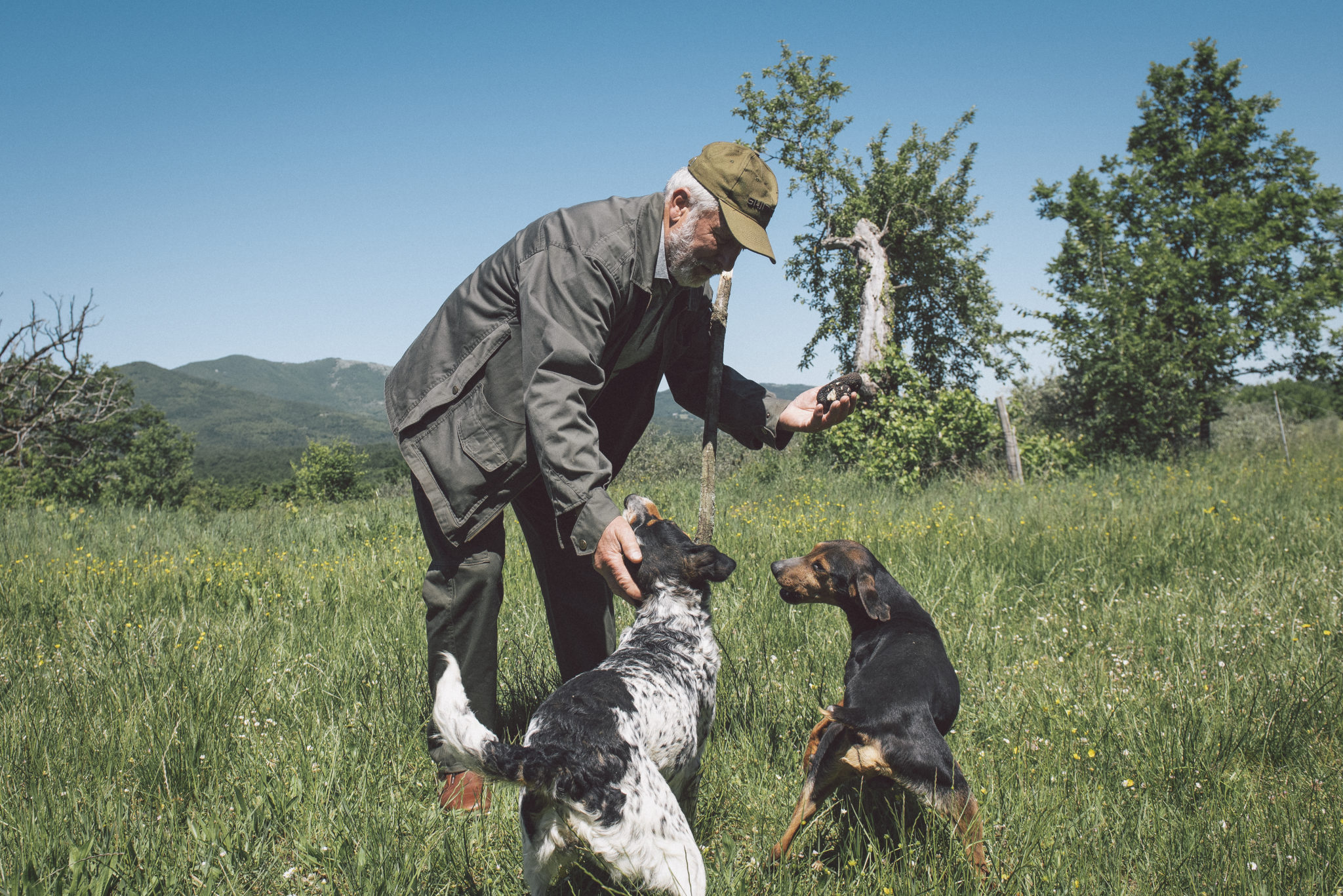
Truffle Hunter and His Dogs – Sabatino Tartufi Estate, Montecastrilli, Umbria, Italy. Courtesy Sabatino Tartufi and Alessandro Pellicciari
Gas chromatography reveals the secret behind the allure of the white truffle: its scent, which can be attributed to the presence of bismethane, dimethyl sulphide and other compounds. Their presence is just a few parts per million in the truffle itself, demonstrating the strength and potency of our own olfactory capabilities.
Being 80 percent water, white truffles have to be consumed fresh, preferably within 10 days of harvest. Due to their short shelf life, they are best enjoyed at local restaurants. In Piedmont alone, there are 46 Michelin-starred restaurants and chefs that can be credited for the global appeal of the white truffle. What was once enjoyed only by locals has since become an international export.
Many of the 46 Michelin-starred restaurants in Piedmont, Italy, specialize in truffles.
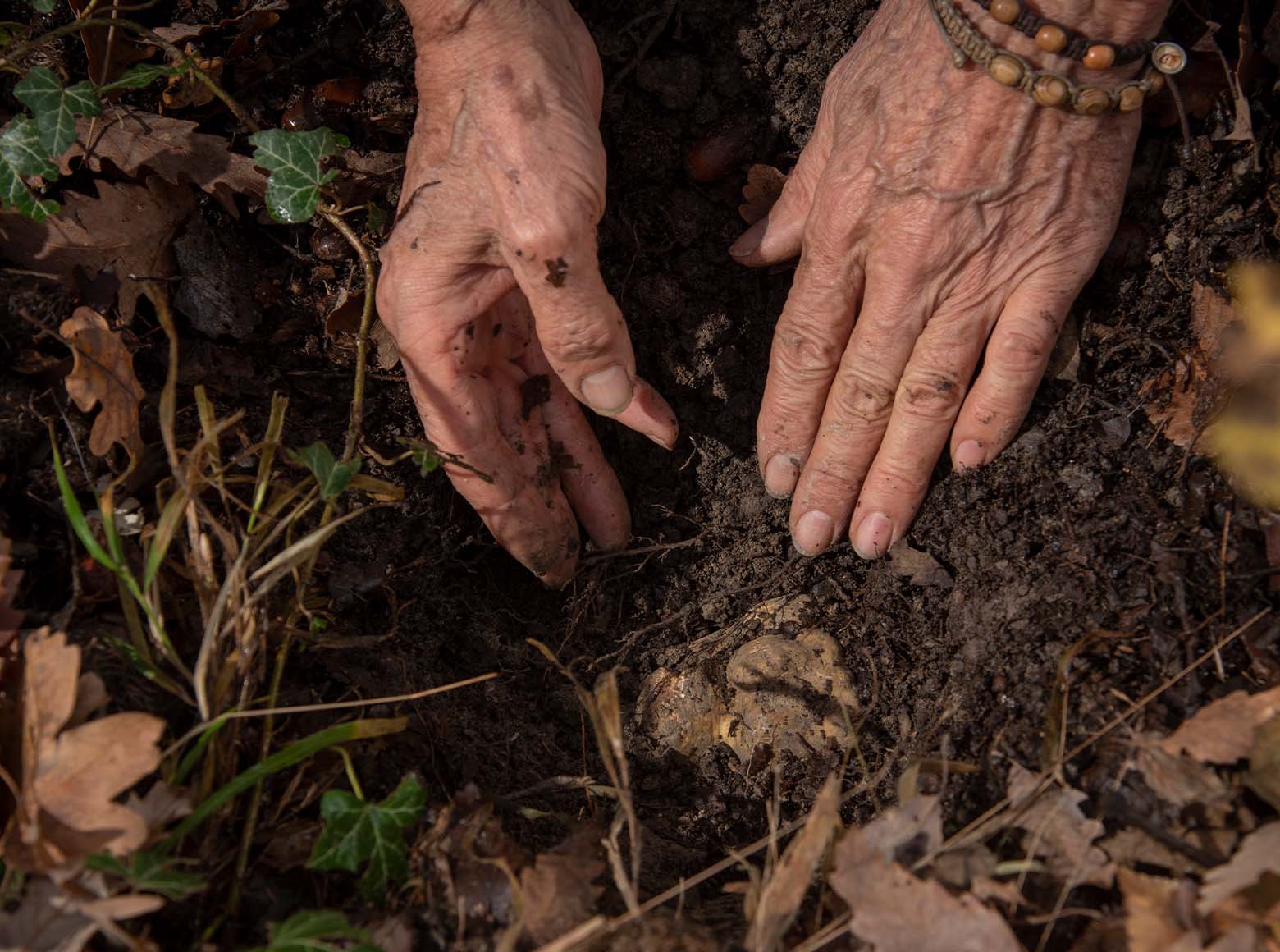
Truffle Hunter Ezio Costa Uncovering a 2+ Ounce White Truffle – Monchiero, Southwest of Alba, Italy. Courtesy The International Alba White Truffle Fair and Tino Gerbaldo
Truffles Across Italy
While the white truffle is unique to Italy, the black truffle grows in Italy as well as Spain, France, Australia and Tasmania.
*Map curated by Sabatino Tartufi
Truffle Host Trees
Truffles grow at the base of trees, including those found below. White truffles thrive under damp and shady soil near water sources on moderate slopes at the bottom of valleys, at altitudes below 2,300 feet, and black truffles grow in most sunny and hilly areas with few trees and groves.
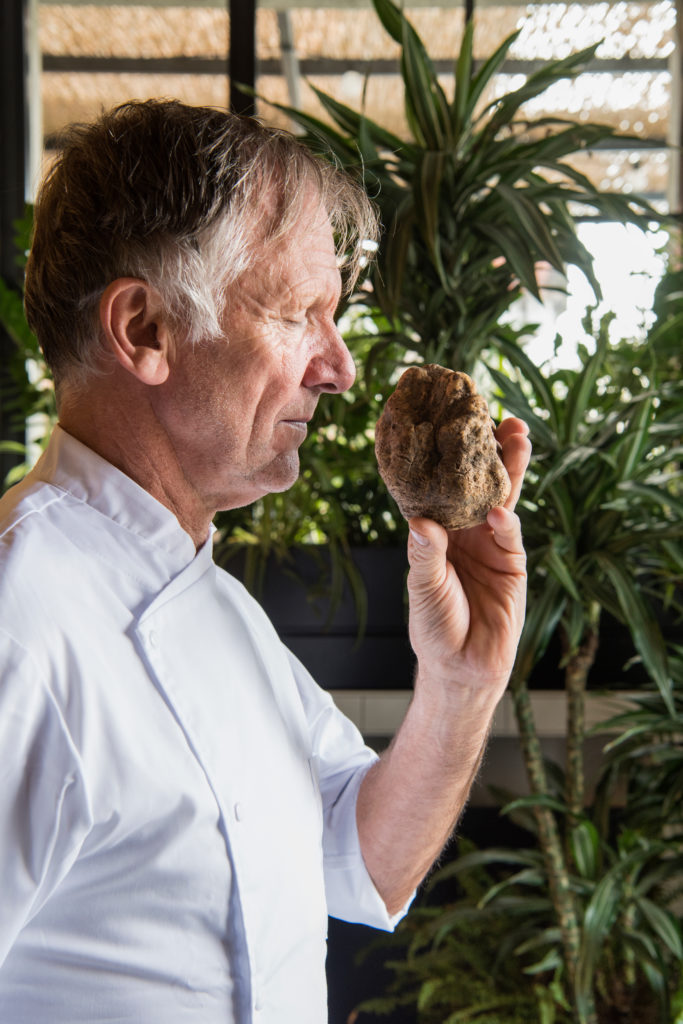
Chef Maurilio Garola Appreciating an Alba White Truffle – Campamac Osteria in Barbaresco, Italy. Courtesy Stefano Scata
Stefano Mosca, Director of National Alba White Truffle Fair Organization, observed, “When restaurants shut down during Covid, truffle merchants turned to their international customer network, through which the market was able to reset itself.”
An Alba White Truffle is the second most expensive thing you can eat, per ounce, after gold leaf.
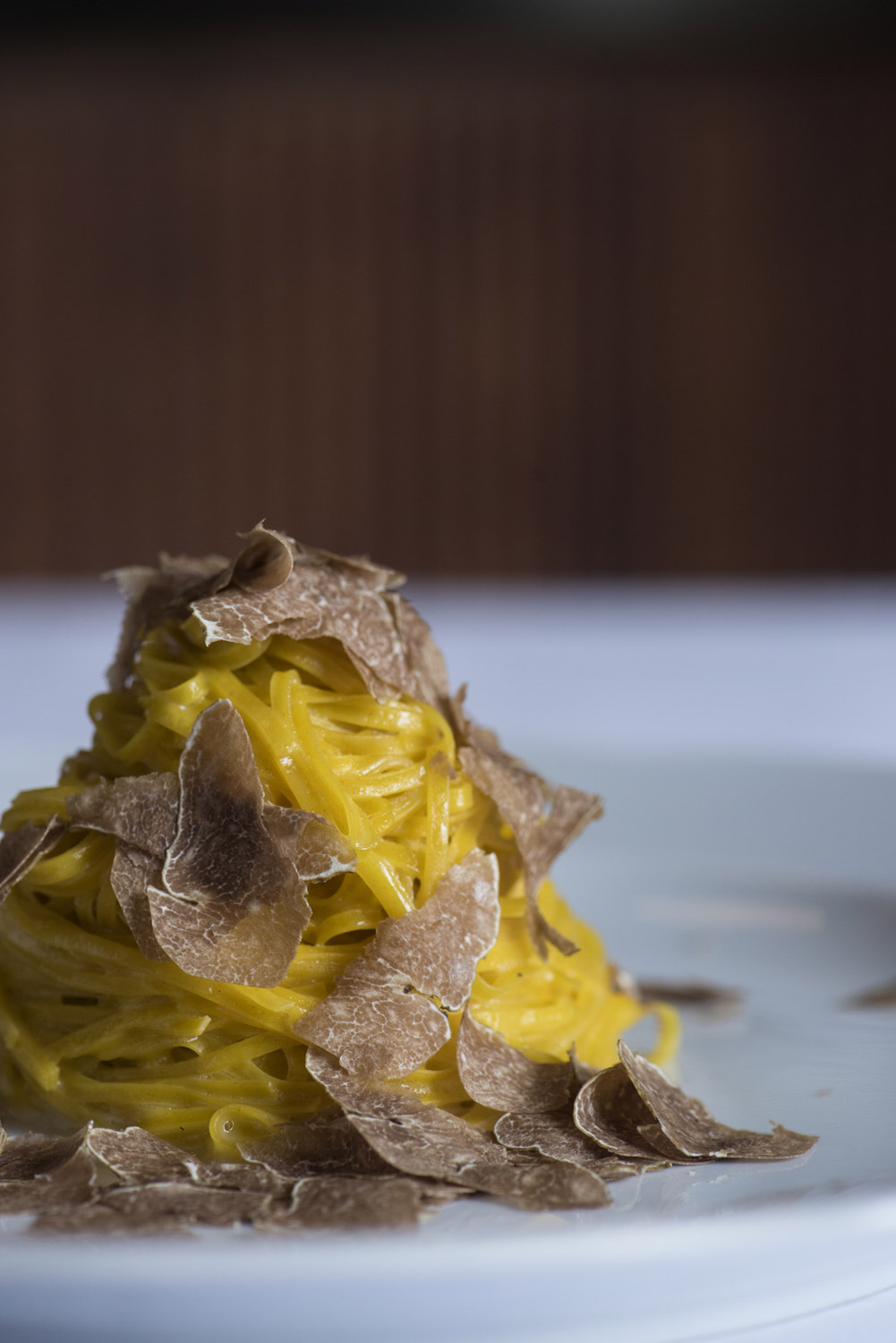
Tagliolini with Alba White Truffle by Chef Maurilio Garola – Campamac Osteria in Barbaresco, Italy. Courtesy Stefano Scata
White truffles continue to inspire new culinary experimentations, even in Italy where classic recipes have remained the same for generations. To enjoy them this fall, thinly slice it over warm egg, tagliolini (fresh angel hair pasta), plain risotto, fondue or beef tartare.
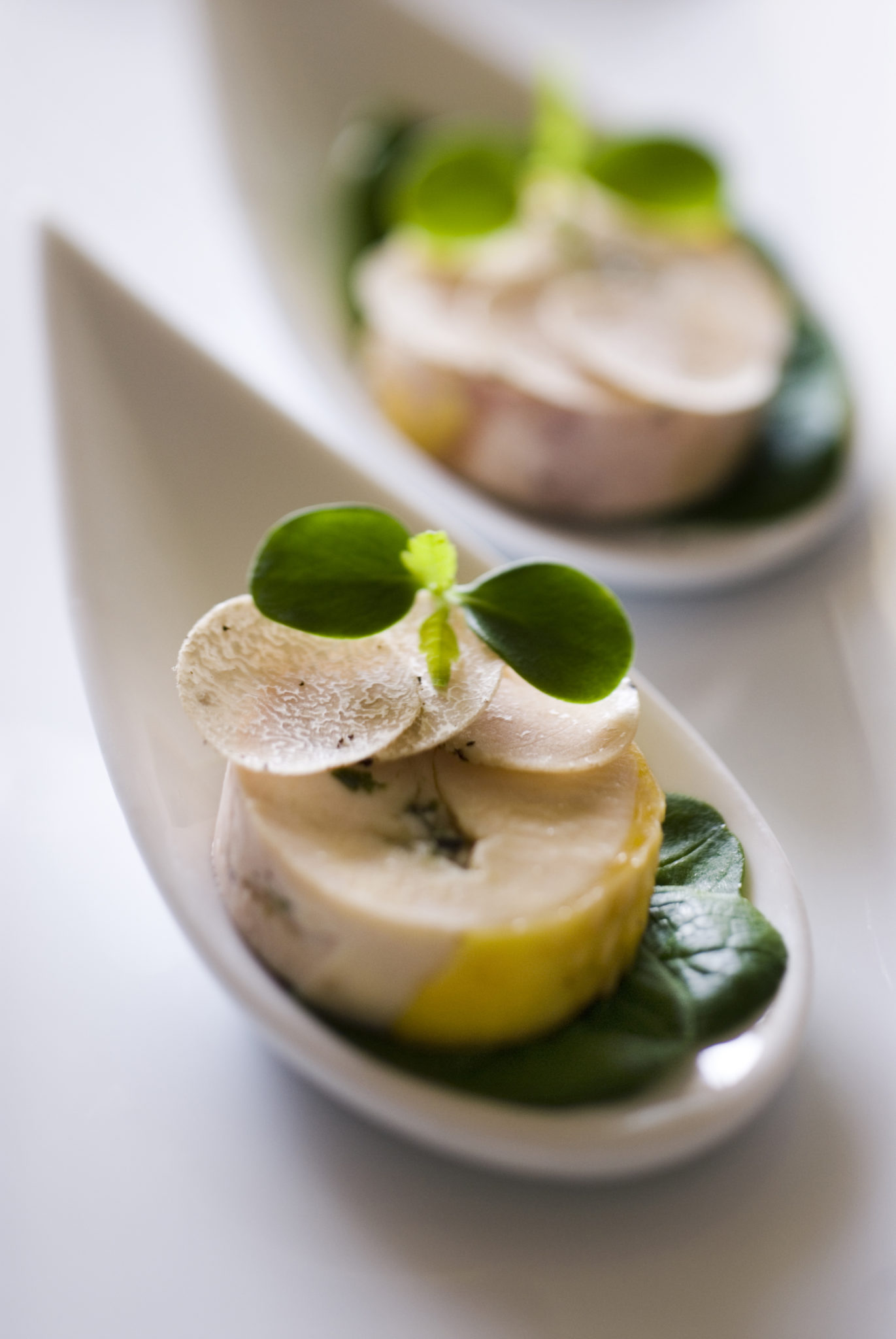
Rabbit Medallion and Alba White Truffle – Restaurant Arnolfo, Colle Val d’Elsa, Italy. Courtesy Stefano Scata
Traditional Alba-Style Beef Carpaccio | 3-MICHELIN-STAR RESTAURANT PIAZZA DUOMO
Serves 8
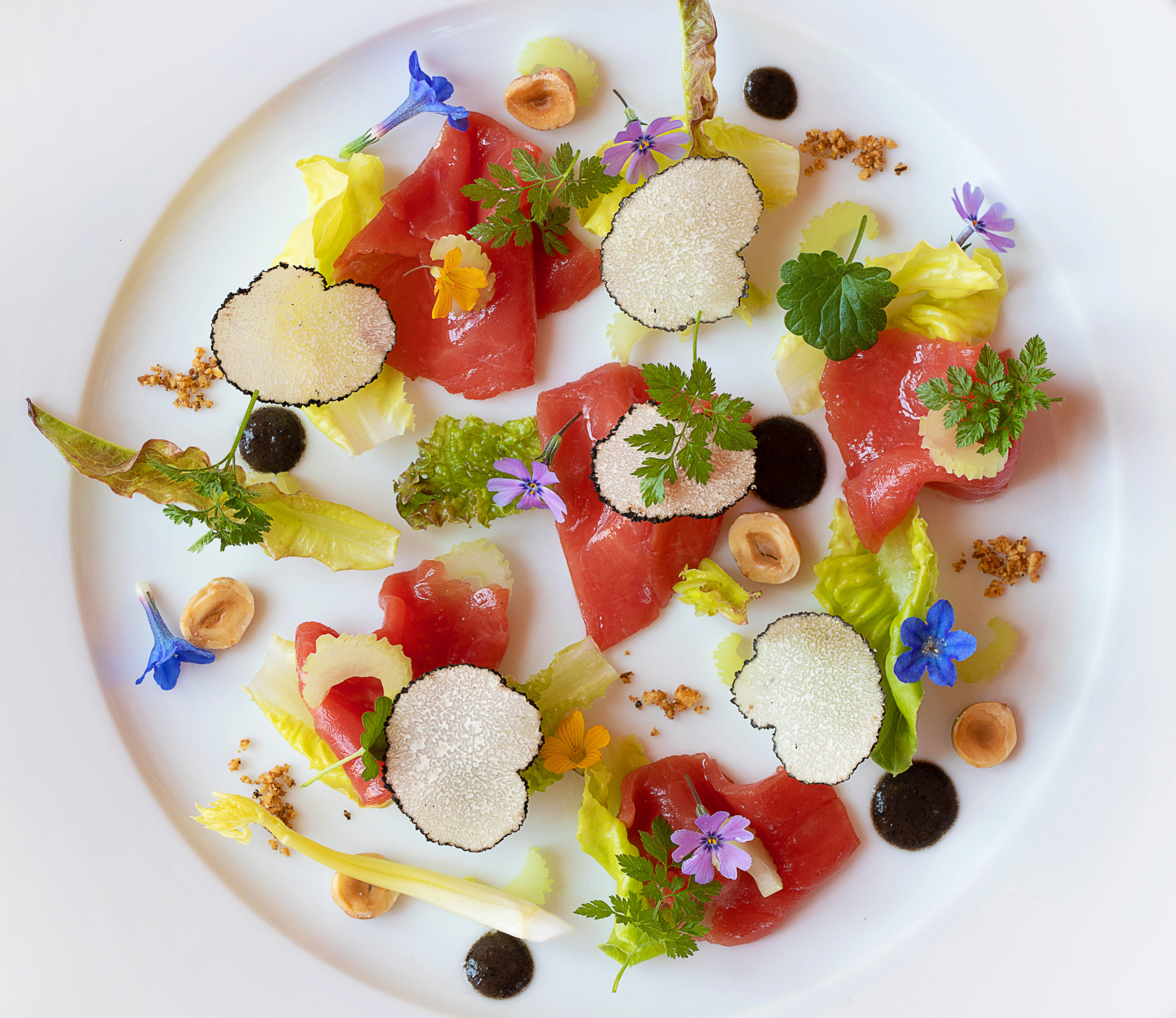
Alba-Style Beef Carpaccio, Piazza Duomo – Alba, Italy. Courtesy Letizia Cigliutti
INGREDIENTS
1.5 oz marbled piedmontese fassona beef, tenderloin or top round, or any other locally-sourced lean beef, sliced thinly for carpaccio style
4 stalks fresh celery, trimmed and thinly sliced 3 heads endive lettuce, leaves separated
1/4 cup hazelnuts
Cilantro, for garnish
Bagna Cauda Sauce:
1/4 cup extra virgin olive oil
6 cloves garlic, peeled and sliced tissue-thin 2-ounce can of anchovy fillets, drained. Salt to taste
Truffle Oil:
1/2 cup extra virgin olive oil
2 tbsp white truffle or 1 tbsp black truffle
INSTRUCTIONS
Begin with the Bagna Cauda sauce. Combine oil and garlic in a saucepan on lowest heat for 15 minutes, without letting the mixture smoke. While oil is heating, chop anchovies into small pieces. After the 15 minutes, add the chopped anchovies, stirring until they dissolve.
Remove from heat and mix Bagna Cauda sauce with carved piedmontese fassona beef slices in a bowl.
Separately, prepare fresh truffle oil. Heat oil over lowest possible heat. Meanwhile, grind truffles in a food processor. Once oil reaches 130 degrees, turn heat off and add ground truffles, allowing to steep for 30 minutes.
Plate endive first, then top with beef and celery. Drizzle truffle oil across plate. Top with shaved truffle slices, hazelnuts and cilantro, to taste.
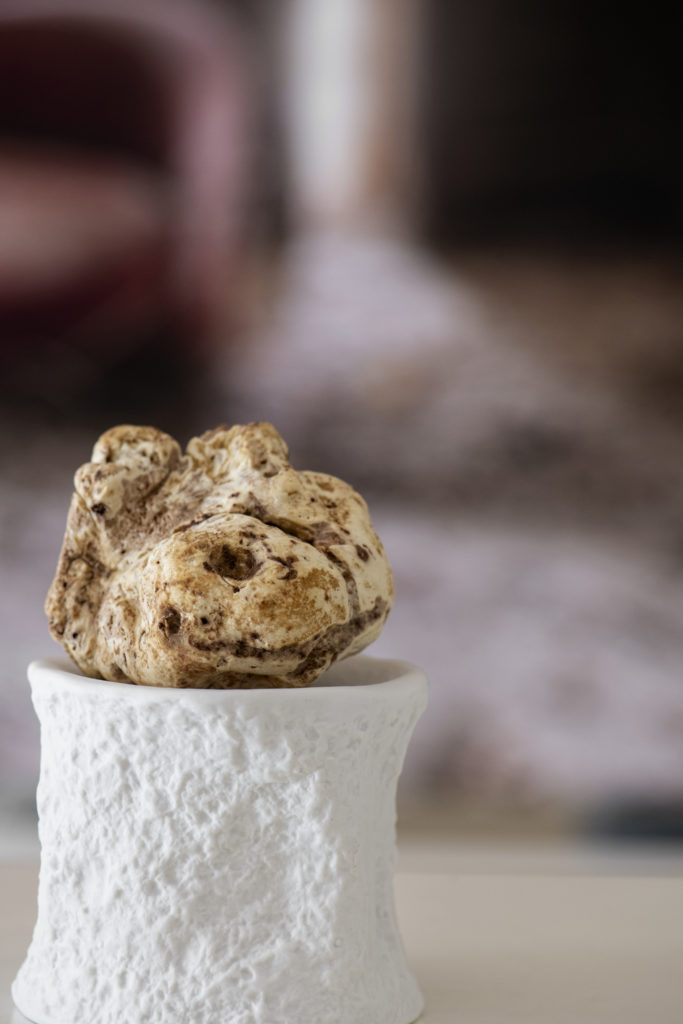
10.6+ Ounce Alba White Truffle, Arnolfo – Colle di Val d’Elsa, Italy. Courtesy Stefano Scata
